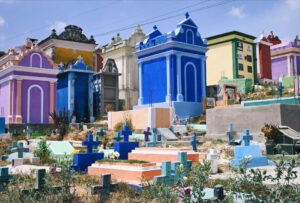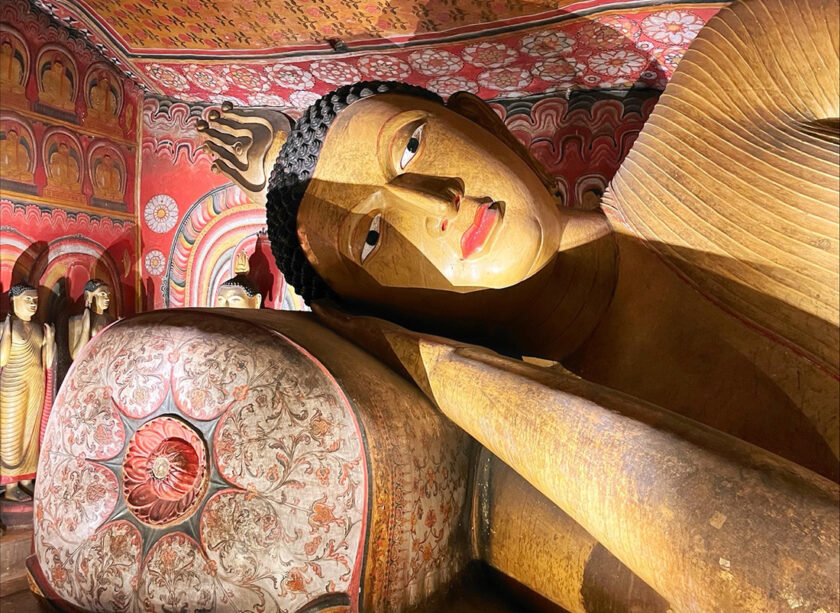
Ancient sites have a beautiful way of connecting you to the past. On a journey through Sri Lanka, you don’t have to look far across the landscape to find ancient rocks etched with secrets and stories from times long gone.
These landmarks that have withstood thousands of years act like a time capsule, revealing narratives and events that helped shape the traditions and practises that still influence the country today.
In Sri Lanka, such sites include Sigiriya Rock, Polonnaruwa, and Dambulla Cave Temple. So well preserved are these places, they have the unique ability to transport you to a bygone era while offering a timeless connection to the cultural and religious roots of the island.
Since I’ve already written about Sigiriya Rock, I’d like to turn your attention to the special pilgrimage site of Dambulla Cave Temple.
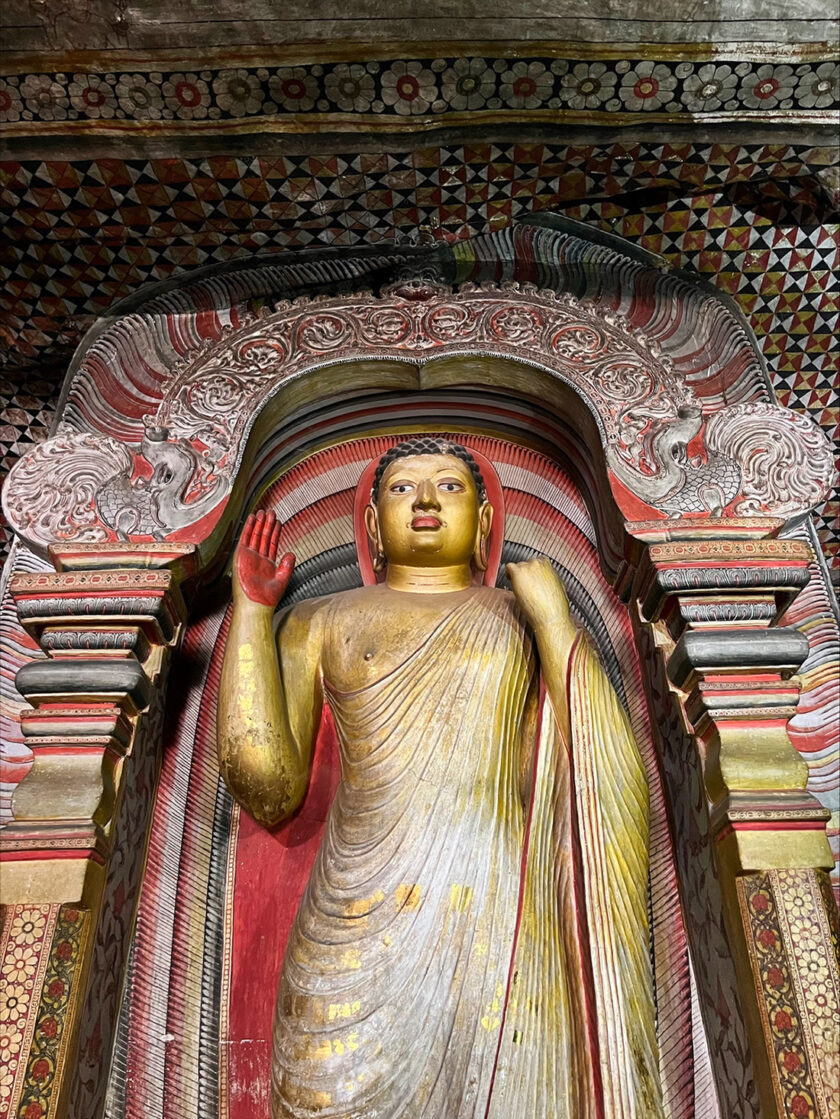
Origins of Dambulla Cave Temple
A king’s retreat
Carved into the colossal embrace of a 160m high granite rock, the Dambulla Cave Temple in Matale traces its origins back over 2,000 years.
Before it became a Buddhist temple complex, the cave had already cemented its place in Sri Lankan history.
It was said to have initially been a refuge for King Valagamba (also referred to as Valagambahu) during a 15-year period of exile as Sri Lanka faced invasions by the Chola dynasty from southern India.
The Cholas launched military campaigns, capturing the island’s capital, (which was Anuradhapura at the time), and forcing King Valagamba into exile.
The caves of Dambulla provided a natural hiding place for the king during his period of exile. Seeking refuge in these caves allowed him to evade his enemies and strategise for the eventual reclamation of his kingdom.
After he managed to regain the throne, he converted the caves into a magnificent temple complex through stone carvings to express his gratitude, and showcase his commitment to Buddhism and his appreciation for the sites that played a role in his journey back to power.
Further paintings and frescos were made by later kings, most prominently King Nissanka Malla, who had the caves’ interiors gilded, earning the place the name Ran Giri (Golden Rock).
Over the centuries, it evolved into a spiritual sanctuary and an important place of worship.
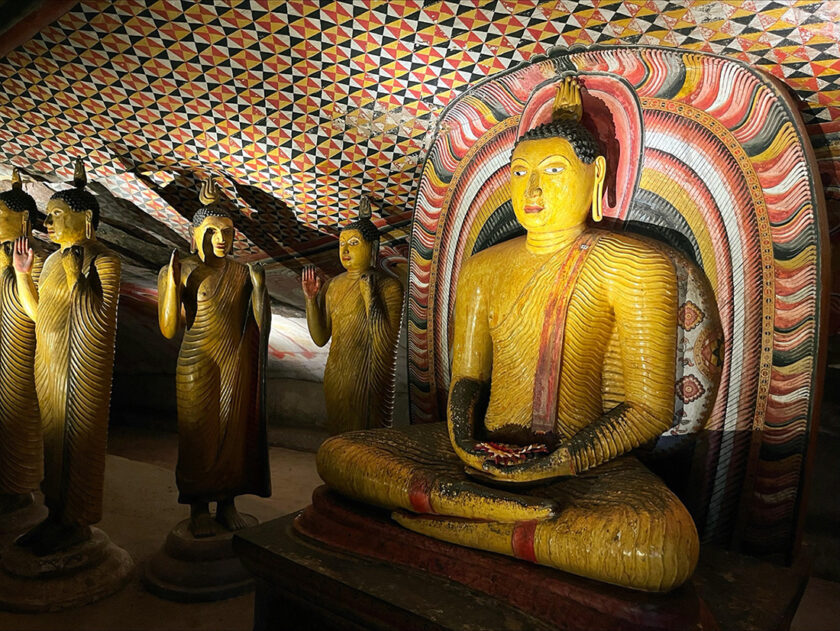
Exploring the caves
After walking up a few hundred stone steps you will finally enter the Dambulla complex, an unusual sight by any standards, a huge rock with white painted colonnades, and a corridor, leading to the main five caves.
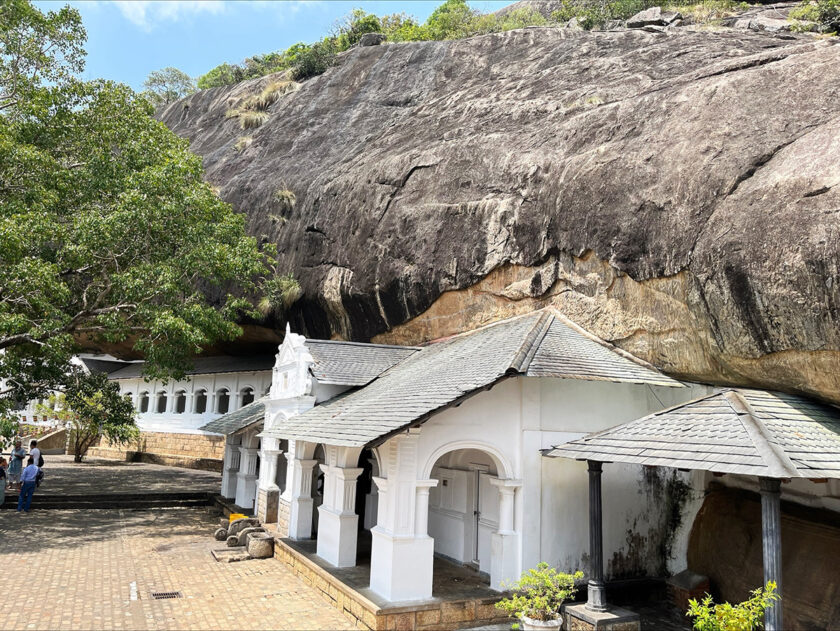
Since 1992 the Dambulla Cave Temple has been recognised as a UNESCO World Heritage Site, not only for its historical associations but also for its remarkable collection of cave temples adorned with intricate murals and statues, showcasing the artistic and religious heritage of Sri Lanka.
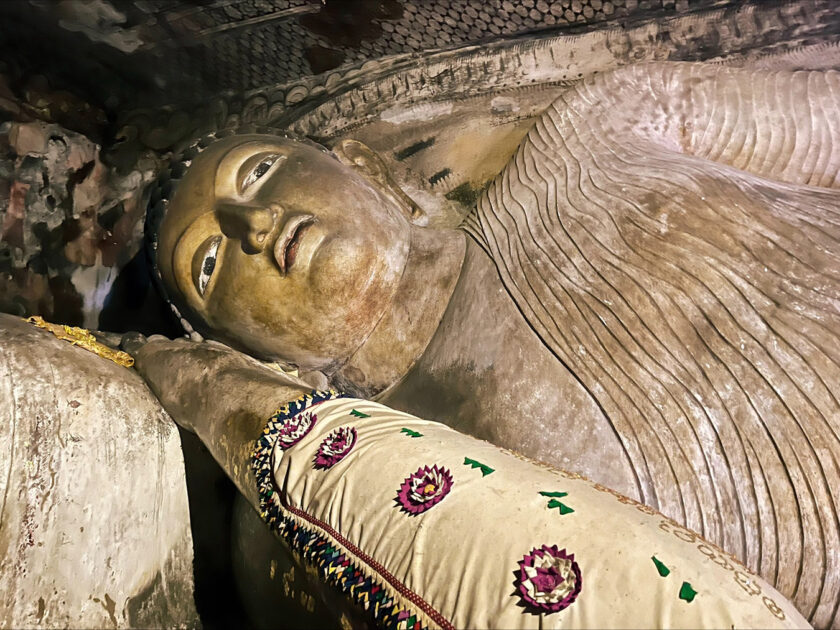
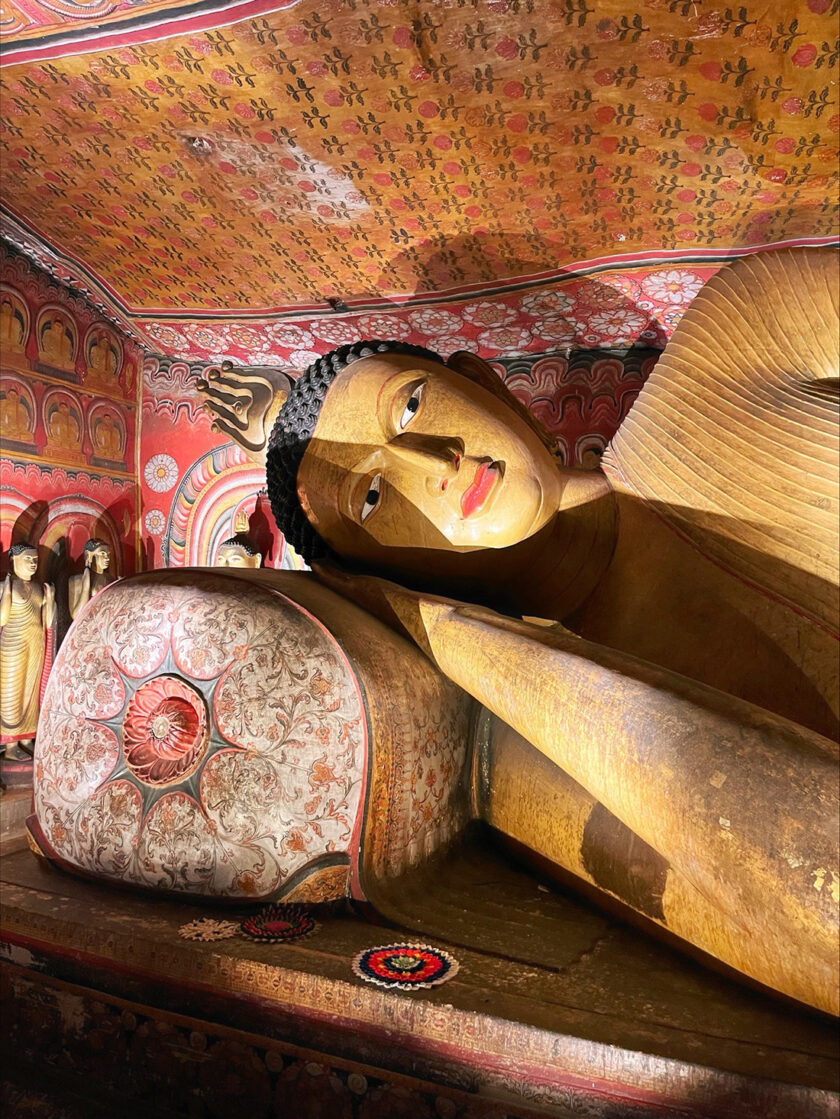
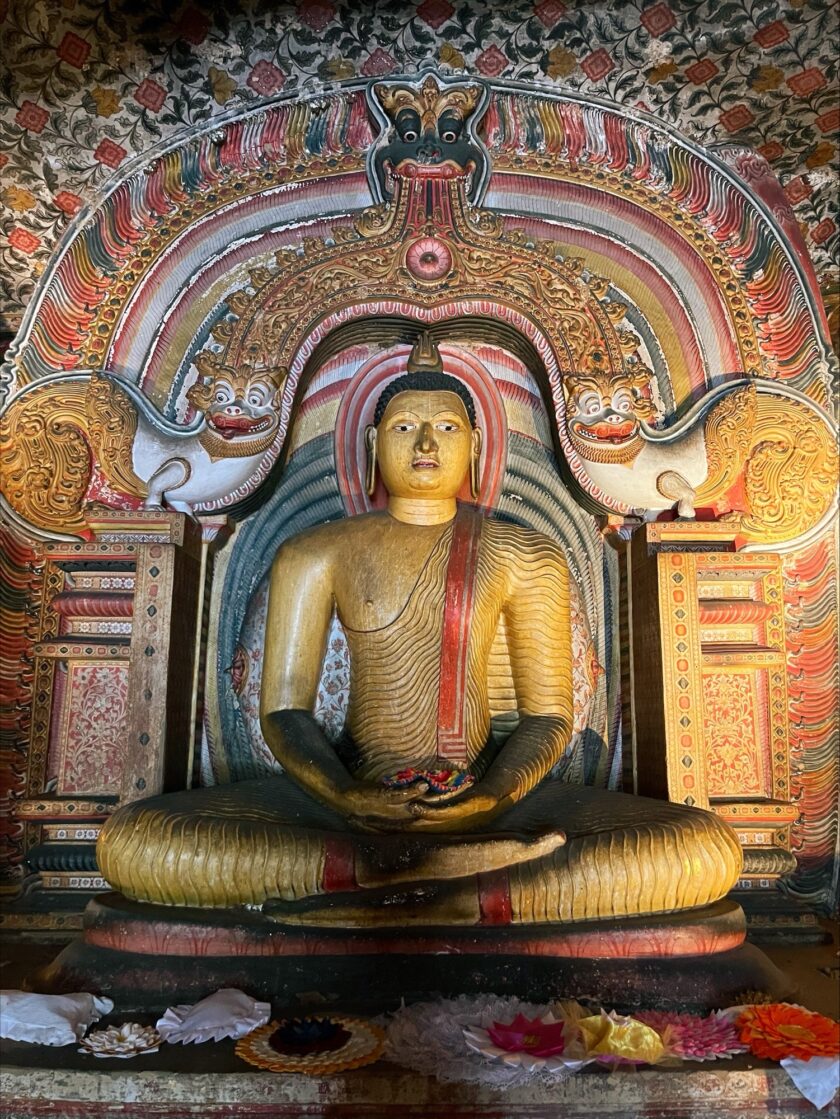
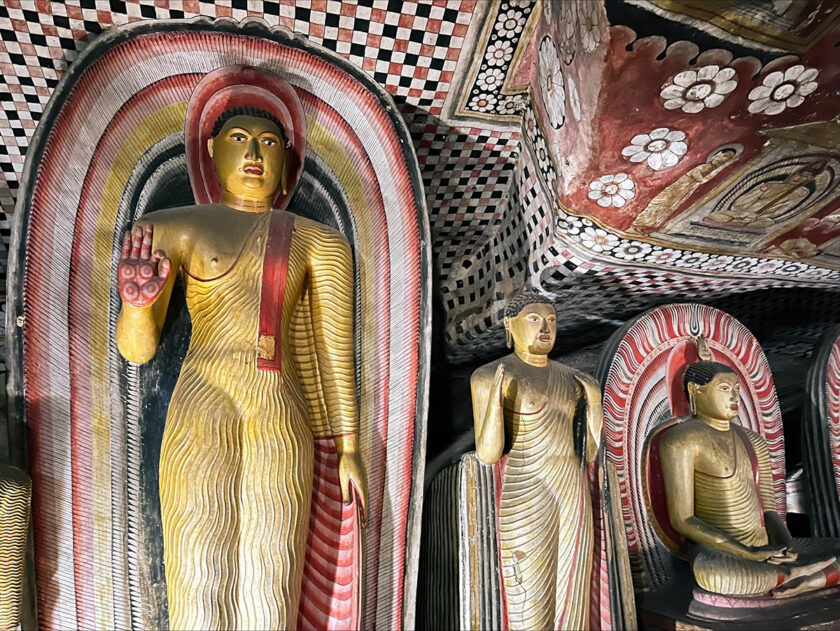
My reflections
Sri Lanka is an immersive country, where you will witness cultural practises and religious traditions spanning the landscape.
A visit to Dambulla Cave Temple transcends the realms of conventional tourism. While I can’t claim it to be a hidden attraction, nor is it a tourist trap.
Many local Sri Lankans make the pilgrimage up the time-worn steps to Dambulla to pray. It is a privilege to see such devotion still taking place in the modern world, as much as it is a privilege to see such well-preserved rock art dating back thousands of years.
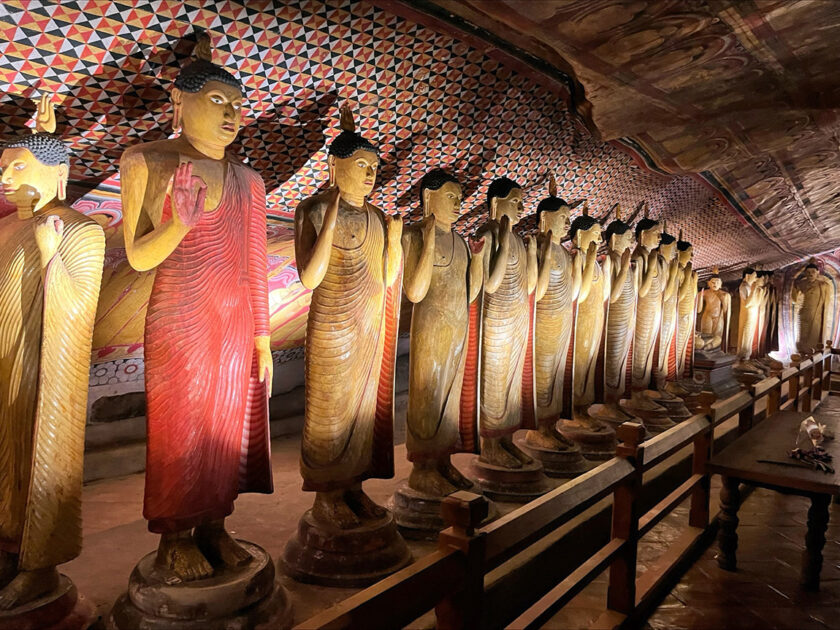
How to get to Dambulla Cave Temple
I visited from Sigirya by Tuktuk. It is only about 20 kilometres (12 miles) away from Dambulla. You could also get a taxi to drop you off at the car park if you prefer.
If you happen to be travelling from Sigiriya to Kandy it would make logistical sense to visit Dambulla en route since it follows the road down to Kandy.
Practical tips
- Adhere to modest clothing norms, covering shoulders and knees, as a gesture of respect when entering these sacred sanctuaries.
- Opt for early morning or late afternoon visits to avoid the midday heat.
- Before you enter the caves you must take off your shoes. There is an area to leave your shoes in front of the complex. I recommend bringing a pair of socks to avoid scotching your feet on the hot ground during high temperatures.
Where to stay
Sigiriya is easily the best base from which to visit Dambulla, so I recommend staying there as opposed to spending a night in Dambulla, which I don’t think it requires unless you have a lot of time to spare.
I spent two nights in Sigiriya staying at Otunna Guest House. I couldn’t recommend this charming eco-lodge enough for its hospitality, delicious home-cooked Sri Lakan food, and quiet location set within a beautiful garden.
Further reading: How to spend two weeks in Sri Lanka.


